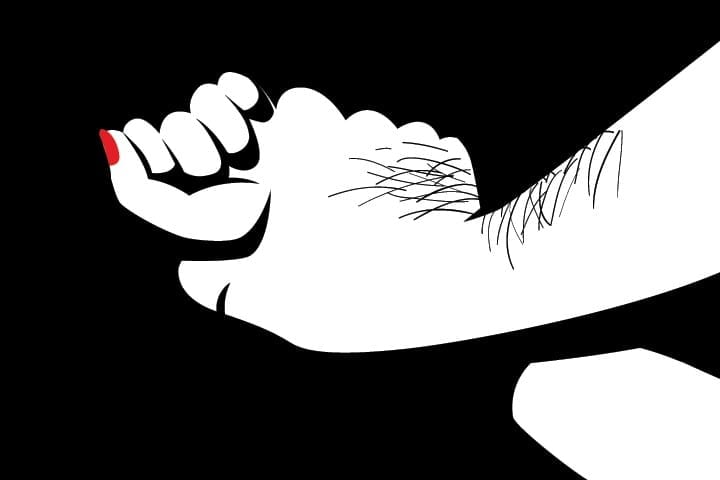Abuse & Gaslighting
A relationship where an individual or group becomes dominate over another, using manipulative techniques including isolation strategies, mental harm, and / or violence or the threat of violence. Types of abuse +Getting support +There are many methods of manipulation. Coercive control can be physical, sexual, emotional, psychological, spiritual, cultural, verbal or financial. Here is a breakdown of the most common types of abuse.
This might include: Physical abuse is usually the final stage, not the starting point, of coercive control; Sexual abuse occurs when a person is forced to take part in any sexual activity; Emotional abuse happens when someone says or does something to make another person feel stupid or worthless; Psychological abuse occurs when someone uses threats and intimidation, causing fear in order to gain control of someone; Spiritual or religious abuse occurs when someone uses an individual’s spiritual beliefs to manipulate, dominate or control them; Cultural abuse happens when an individual’s culture or religion imposes harmful practices; Verbal abuse occurs when someone uses written or spoken language to threaten, intimidate or otherwise undermine another person; Financial abuse occurs when someone controls an individual’s financial resources without the person’s consent, or misuses those resources; Neglect occurs when someone fails in their responsibility to provide care or assistance to another; Lastly, Bullying is the foundation of all coercive control, and can be extended to Cyber Bullying.
Related terms
Types of abuse, what is it, and how does it happen?
Abuse is the collective term for mental, physical and cultural techniques used to dominate an individual. It is most commonly identified in personal relationships such as between partners, or of a child, but it can happen in any circumstance when an individual can be dominated by another individual or group, including child abuse by a family friend or sexual abuse by a person in a position of authority. There are many methods used to deliver this domination or abuse, and they are often used in tandem to exert total, or near total control over an individual including:
Physical Abuse
Physical abuse is usually the final stage, not the starting point, of coercive control. It happens when someone strikes or physically restrains another person, but also includes painful pinching, squeezing forcefully, and pushing or shoving.
Sexual Abuse
Sexual abuse occurs when a person is forced to take part in any sexual activity. Genital mutilation and enforced abortion are extreme forms of sexual abuse. Legally, any unwanted sexually motivated touch is an assault, but an assault may take the form of verbal sexual harassment (such as catcalls) and/or enforced social roles, as well as any doctrinal assertion that either gender is inherently superior.
Emotional abuse
Psychological abuse
Spiritual or religious abuse
Cultural abuse
Verbal abuse
Bullying
Financial abuse
Cyber Bullying
Bullying is the foundation of all coercive control. While the problem is now recognized in schools, much more needs to be done to eliminate bullying from business and home environments. Bullying usually consists of verbal abuse, but can easily escalate to abuse, and leads to a feeling of helplessness for those who are bullied.
Neglect
Physical Abuse – Coercive Control

Victims usually become too intimidated to speak out, and the violence may also intensify over time, resulting in more severe injuries and potentially even death. The victim is also commonly blamed for the physical abuse by their attacker, eroding their self-belief.
Physical Abuse/ Domestic Violence Resources
- Domestic Violence Hotline [US] – the hotline for domestic abuse in the United States
- Domestic Violence Helpline [UK] – the hotline for domestic abuse in the United Kingdom
- List of National Domestic Violence Helplines – a list of various domestic violence helplines and organizations
Sexual Abuse

Sexual abuse can vary in intensity, from one-off incidents through to a repeated, systemic pattern of abuse. The term can also encompass sexually-related physical acts including genital mutilation and enforced abortion, although these can both result from cultural expectations and be isolated from other forms of long-term abuse.
Sexual Abuse Resources
- Rape, Abuse & Incest National Network – anti-sexual violence organization
- Center for Missing and Exploited Children – helping abused children
- Polaris Project – help for victims of commercial sexual abuse and exploitation
Emotional Abuse

The perpetrator employs mental strategies that make the victim feel stupid or worthless, before reinforcing the value of their own relationship. It is a consistent, deliberate and systematic process to belittle the individual and create a dependency in the relationship. Commonly, it is considered a part of intimate relationship between partners or spouses, but is also perpetrated in familial relationships between parents and children, or by people in positions of authority to those in their care.
Emotional abuse is often applied alongside another form of abuse such as physical or sexual abuse, to intimidate the victim into maintaining silence and protecting their attacker.
Psychological Abuse

Whereas emotional abuse is more typically applied in a one-to-one situation, psychological abuse can routinely be identified within the frameworks of toxic groups such as cults, radicalised groups and extremist religious sects for example.
“Gaslighting” is a common form of psychological abuse where the victim is tricked into believing that they have mental difficulties.
Spiritual Abuse

Cultural Abuse

Verbal Abuse

Financial Abuse

Neglect

Neglect occurs when someone fails in their responsibility to provide care or assistance to another. Predatory people or some individuals in authority, strip away the assets of a victim, and then abandon them. They have no concern for either young or old.
A culture of neglect has been found in some care homes for the elderly, in children’s homes, prisons and mental hospitals.
Bullying

Bullying is the foundation of all coercive control.While the problem is now recognized in schools, much more needs to be done to eliminate bullying from business and home environments and online. Bullying usually consists of verbal abuse, but can easily escalate to violence, and leads to a feeling of helplessness for those who are bullied.
Bullying is the foundation of all coercive control. It encompasses all forms of physical, psychological, emotional and verbal abuse, and may be carried out by an individual or by a group. It relies on the victim being too intimidated to seek help.
Traditionally, bullying was a physical problem, happening face-to-face between the victim and their attacker(s). The rise of digital technology including social media and online platforms however, has created an effective medium for bullying to happen remotely, with the victim and their attacker potentially never even meeting.
Bullying doesn’t just happen to schoolchildren. This form of influence happens throughout society: in the workplace, social clubs, places of worship, and wherever people of any age gather.
Bullying is commonly defined as aggressive, domineering behavior, determined by four factors:
- it is deliberate
- it is intended to cause pain, discomfort or fear
- it relies on an imbalance of power, and
- it is persistent.
Bullying can take several forms, the most common of which are:
- physical abuse – slapping, pushing, kicking, shoving or using force to intimidate
- exclusion – deliberately excluding people from social events, or using the silent treatment (shunning and alienation are extreme forms of this)
- slander or mudslinging – spreading false, malicious rumors
- verbal abuse – name-calling, taunting, jeering, and mocking
- degradation – using shame, embarrassment, or threats to coerce and subjugate
There are also targeted forms of bullying, where people are harassed for their gender, sexual orientation, race, religion, physical ability, economic status, their appearance, their perceived social standing, or any other difference from the majority. Although our society is becoming more inclusive of diversity, there are still far too many instances where those who are seen as different in some way are picked on and bullied mercilessly.
Whether targeted or not, bullying is at the base of most undue influence. It is the common tool of both destructive groups and predatory individuals. Underneath the demand for compliance, there is usually a threat or an induced phobia. Bullying can be used to coerce people into anything from handing over their lunch money to avoid a blow, to handing over their children, to avoid damnation.
Bullying can lead to disastrous results: without support, victims do not learn the social confidence needed to fend off the attacks, and they can make disastrous choices, sometimes causing irreparable damage. Victims of bullying can become isolated and can resort to suicide – the most significant cause of death in young people. Out of rage, some victims will lash out and go on the offensive. The epidemic of school shootings in the US is often a response to bullying.
A culture that rejects bullying and shames predators and their supporters can overcome the extreme consequences of this behavior. If children are taught to speak out through intelligent disobedience and assertiveness training, and if bullies are identified early and helped to find a better expression for their unhappiness, there will be far less bullying.
Bullies are human predators. Learn how to recognize them here.
Cyber Bullying

Cyberbulllying is the online form of bullying. On the Internet, it is easy for predatory people to hide their identity and harass and distress their targets. These days, it is possible to create a vicious rumor about anyone; from a neighbor to a complete stranger at the other side of the world. Negative, and often exaggerated or false, information can be repeated, amplified and broadcast endlessly.
Cyberbullying takes many forms – from rude comments on social media, to obscene or threatening personal messages and emails; from smearing a former partner’s reputation in a chat forum, to urging a video blogger to commit suicide. Anonymity allows people to act without compassion. Even people who are normally considerate may unleash their fury on a complete stranger, because they cannot see the damage they are doing.
Predatory groups use cyberbullying to wear down the resistance of their targets, discredit critics, ruin the lives of former members, and create rifts in survivor networks: a few well-placed slanders can tear apart even the most supportive online community.
The most important thing to remember about online bullying, particularly from those we have never met, is that it’s not really about you. Even when a bully has targeted you due to your race, religion, gender orientation, opinion, appearance or anything else that makes you “different,” they are reacting, not to you, but to their own pre-conceptions and prejudices. Refusing to be shamed and cajoled into uniformity goes a long way to neutralizing a predator, and can teach those who are really expressing their pain, fear, or ignorance, a better way to communicate in our global village.
If you are the target of cyber-bullying, report it to the host of the platform; talk to your friends to relieve the hurt; block the bully, after making it known as widely as possible that they are a bully. It is usually best not to respond to aggressive comments. And remember: it isn’t you who has a problem, it is the bully.
Bullies are human predators. Find out about their characteristics here.
Getting support
US Support
The Hotline – help for those experiencing domestic abuse in the USA
Child USA – help for abused children in the USA
Domestic Violence Research – a database of research and information on domestic abuse National Resource Center on Domestic Violence – a resource archive of information and research on domestic abuse
UK Support
Domestic Violence Helpline – help for those experiencing domestic abuse in the UK
Childline UK – help for abused children in the UK
Domestic Violence Research – a database of research and information on domestic abuse National Resource Center on Domestic Violence – a resource archive of information and research on domestic abuse
More on abusive relationships
In an abusive relationship, one partner dominates the other. Freedom of choice is taken away, and one person becomes the other’s servant, or even their slave.
Abusive relationships rely upon coercive control. The psychological prison created by a dominant partner can also lead to sexual abuse and physical violence. Self-esteem is undermined through gaslighting. Even strong-willed and independent people can be reduced to compliance and subservience in a toxic relationship. Through manipulation, a partner can be reduced to complete compliance. They will defend the predator against others and return to the relationship, if they are not offered the proper help to overcome their dependence.
People often blame the victims of domestic abuse and suggest that they should simply leave the abusive partner, but our psychology is more complicated than that. Predatory people usually create a relationship before they begin to abuse their victims – unless the victims are already conditioned to accept abuse. Before physical abuse begins a framework of coercive control is created. The target’s resistance will have been undermined.
An abusive relationship is a state of mind: a two-person destructive cult where the abuser uses a web of fear, guilt, obligation, and confusion to maintain absolute control. Most often, the abused partner is manipulated into believing that the abuse is less severe than it really is, by trivializing and minimizing. They may be convinced that the situation is temporary and will work itself out, if only they work harder, or even – worst of all – that they deserve the maltreatment, because of some past failing. Although most people suffering from domestic abuse don’t start out with low self-esteem, it is the inevitable result, so many abused partners come to see themselves as unworthy of love, and are convinced that if they leave the abuser no one else will ever love them.
Victims of coercive control in domestic relationships can find themselves confined to the house, forbidden from contact with friends and relatives, and forced to perform endless menial tasks based upon capricious rules. Their human rights are severely curtailed under the control of a human predator. They will often have been seduced into the relationship with a deliberate pattern of recruitment.
Societal expectations also play a major role in an abused partner’s unwillingness to leave – until recently, divorce was taboo; even now, many people in abusive relationships are urged to “work it out” rather than “throw away” the marriage or relationship, with a heavy burden of guilt placed on the partner who couldn’t make it work. Another significant factor is a very real fear of violent reprisals to those who leave – a substantial percentage of spousal murders occur just after the abused partner has fled the relationship. Those who leave often face not only the disapproval of society but financial hardship, as the abuser often creates financial dependence as part of the controlling relationship.
If the abusive relationship occurs within a high-control group, the chances of leaving decrease even further, as the group controls all relationships, so that the group is often spoken of as the “third person in the marriage bed.” Groups that follow strict patriarchy or “male headship” often do not recognize abuse as a “proper” reason for divorce; many former abused women tell of being directed by church elders to pray more and be a more “loving”, submissive wife.
In the majority of cases – perhaps 80% – the victims of this form of coercive control are female, but domestic abuse is not limited to women: men abused by their wives unfortunately face scorn and ridicule, especially if they are physically larger than their tormentors, and often do not speak out for fear of being viewed as “less of a man” for being abused. The very existence of abused husbands proves that domestic abuse is not about physical strength, but emotional and psychological dominance. However, a society largely ignorant of the realities of coercive control has difficulty recognizing that men are also vulnerable to manipulation in a romantic relationship, and male victims of domestic abuse are still largely under-represented and ignored. Domestic abuse also happens in same-sex relationships; although we are still in the early days of societal acceptance, it is clear that those in same-sex relationships can and do experience the same patterns of behavior as heterosexuals.
Victims often develop complex post-traumatic stress disorder. In the 1970s, psychologists Margaret Singer and Camella Serum noted the similarities between returning prisoners of war and victims of domestic abuse. Psychologist Steven Morgan called spousal abuse “conjugal terrorism”, noting the similarities between the behavior and attitudes of violent husbands and political terrorists.
Professor Evan Stark’s Coercive Control shows that undue influence is the basis for domestic violence, and that to prevent this violence, we must understand coercive control. It is up to each of us to halt the cycle of violence – and recognize the patterns of coercion that keep the abused partner captive.
In the UK in 2015, coercive control was made a criminal act, leading to the prosecution of spousal abusers. We need to alert society to the characteristics of human predators and their techniques of seduction and recruitment.
Read about Family and One-on-One Cults here.
